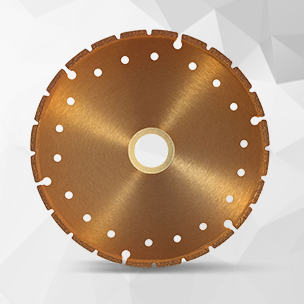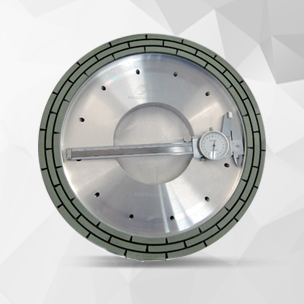Your current browser version is too low, in order to bring you a better browsing effect, please use a higher version browser
Ask anyone in the construction or manufacturing business, and you’ll hear the same thing—once you’ve used a good diamond tool, going back feels like a downgrade. These tools, whether in the form of cutting blades, grinding wheels, or drill bits, have set a standard for precision that steel or carbide simply can’t match. At AT&M’s plant, rows of diamond blades sit cooling on racks after testing, each marked with tiny numbers that tell the story of its grain size, bond type, and intended job. Diamond Tools are not just for the obvious heavy-duty jobs like slicing granite blocks. They are equally at home in electronics factories, trimming delicate wafers where one wrong move could cost thousands. And unlike many tools that start sharp and fade fast, they hold their performance much longer, meaning fewer machine stops and more consistent output.

On the surface, a diamond blade looks similar to a steel one. But the magic is in the details.
Industrial diamonds—synthetic, not mined from jewelry sources—are embedded in a carefully engineered metal or resin matrix. Each particle’s shape, size, and placement matter. AT&M adjusts these variables depending on the end use. Meanwhile, it follows specific qualifications. For example, a coarse-grain diamond blade for concrete demolition will have visibly larger crystals to chew through aggregate quickly, while a fine-grit diamond wheel for glass edging will look smoother to the eye.
Diamonds rank 10 on the Mohs scale, unmatched by any natural material. This hardness isn’t just theoretical—it shows up in daily work. During a municipal road expansion, an AT&M diamond blade ran for over 1,800 meters of reinforced concrete cuts before the edge needed dressing. By contrast, a standard carbide blade on the same job lasted less than 400 meters. One site supervisor joked, “The diamond one still looked bored; the carbide was crying for mercy.”
Diamond conducts heat better than copper. This isn’t just a neat fact—it’s the reason you can cut heat-sensitive materials without leaving burn marks or stress cracks. In tile shops, operators prefer AT&M’s thin-kerf diamond blades because they run cooler, reducing waste from chipped edges. It’s also why aerospace factories trust them for shaping ceramic turbine parts—too much heat there, and a million-dollar part is scrap.
The reach of diamond tools extends far beyond the quarry or workshop.
From quarrying granite to slicing marble tiles, diamond tools are the backbone of stonework. AT&M’s large-diameter blades cut reinforced concrete in bridge construction. On a metro project, crews used their blades to slice thick segments without stopping for re-sharpening, saving days on the schedule.
In cleanroom environments, the margin for error is thinner than a hair. AT&M’s fine diamond dicing blades are used to separate silicon wafers into chips, with kerf losses measured in microns. That’s hours saved per batch.
Aircraft components increasingly use composites like carbon fiber reinforced plastics, which shred conventional tools. Diamond grinding wheels handle them without fraying the fibers, and the geometry stays true for hundreds of parts. In one case, an AT&M wheel held tolerance within ±0.01 mm over a 6-month production run—something unheard of with non-diamond tooling.
Making a diamond tool is more craft than simple manufacturing.
Grain size determines performance. Coarse grains cut faster but leave rougher finishes, while fine grains are slower but precise. AT&M’s buyers source synthetic diamonds from specialized producers, rejecting batches with inconsistent shapes because irregular grains can cause micro-fractures during cutting.
The bond holds the diamonds in place under load and heat. AT&M uses high-pressure sintering furnaces, heating tools to over 1,000°C in controlled atmospheres. It’s a process where seconds matter—a few degrees too hot and the bond weakens, too cool and the diamond retention suffers.
After pressing and sintering, each blade or wheel is ground to exact dimensions. Balancing machines spin the tools at full operating speed to detect vibration. An inspector has rejected a blade that looked flawless—because the balance reading was just outside spec. That blade won’t see a customer, no matter how much it cost to make.
Beyond the marketing claims, the real proof is in the results.
Diamond edges resist rounding even under constant use. This means every cut in a production run matches the first, reducing scrap rates and rework. For a factory making ceramic insulators, switching to AT&M diamond wheels cut defect rates from 8% to under 2%.

A higher upfront cost pays back in fewer replacements. One bridge contractor calculated that AT&M blades saved them nearly $50,000 a year in downtime and consumables, simply because they lasted through entire projects without mid-job replacements.
Modern CNC machines run tight tolerances at high speeds. Diamond tools can handle the feed rates without deflecting. This precision lets manufacturers program more aggressive tool paths, reducing machining time.
Not all diamond tools are created equal, and matching tool to task is critical.
Different materials wear diamonds differently. Cutting soft limestone? You’ll need a blade with more exposed diamonds. Dense granite? A harder bond will release diamonds slower, extending life.
Fine grit blades make cleaner cuts on fragile materials but are slower. Coarse grit is the opposite. AT&M’s sales engineers often bring demo samples so clients can see and feel the difference before committing.
A blade rated for 8,000 RPM won’t last on a machine that pushes 12,000. Matching tool specs to machine limits is as much about safety as performance. AT&M can provide standard products or design custom solutions to meet your exact requirements. If you’re looking for diamond tools that match the demands of your business and help you deliver precision work every time, get in touch with AT&M.
A well-kept diamond tool can outlast neglect by years.
Cutting generates dust that can clog segments. Regular cleaning keeps diamonds exposed and cutting efficiently. Some shops use ultrasonic baths for small diamond burrs.
Tools should be kept flat and dry. Because diamond blades may warp simply from being leaned against a damp wall for months.
Pushing a blade through material faster than it can cut causes heat buildup, glazing the diamonds. Once glazed, performance drops sharply.
The innovation pipeline is active, and AT&M is part of it.
Applying nanodiamond films over cutting surfaces can lower friction and increase wear resistance even further. Early tests show a 20% life increase.
Combining diamond with cubic boron nitride (CBN) could open new applications in high-heat machining where pure diamond struggles.
AT&M reclaims diamonds from worn tools, separating them from the bond matrix. Recycled diamonds are re-graded and reused, cutting costs and reducing mining demand.
Q1: How should diamond tools be maintained for longer life?
A: Clean them after use, store properly, and avoid cutting outside their design.
Q2: Are AT&M diamond tools suitable for both industrial and DIY use?
A: Yes, but industrial-grade versions handle far more stress.
Q3: How does bond type affect diamond tool performance?
A: Metal bonds last longer, resin bonds cut faster, and electroplated bonds excel in delicate tasks.
